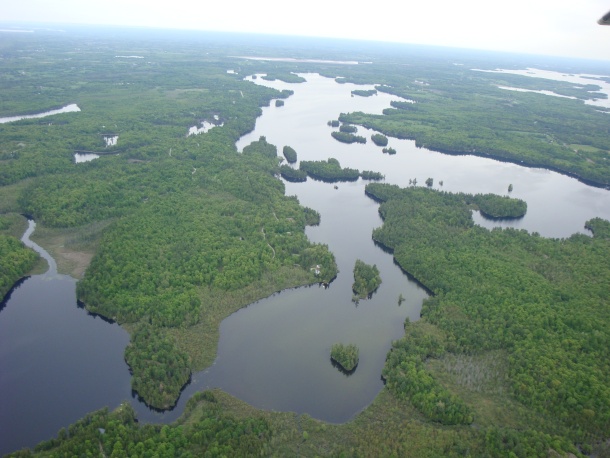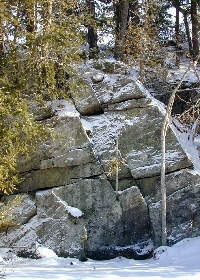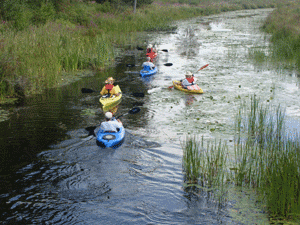Fast Facts About Otty Lake
Here are just a few fast facts you may be interested to know about Otty Lake. For a full description, consult the 2007 Report on the State of the Lake Report, pages 13-19.

Aerial Image of Otty Lake – Summer 2009
Download a full size copy of this image
Location
- Otty Lake is located in Lanark County, Ontario, 5 km southeast of the Town of Perth
- the lake lies in a south-westerly to northeasterly direction (44° 50’ N, 76° 13’W)
- it spans the boundary of two townships: Tay Valley Township and Drummond/North Elmsley Township
Size
- Otty Lake has a surface area of 6.4 km2 (2.5 sq mi)
- its total shoreline length is 35 km (22 mi)
- Otty is approximately 131 m(429.8 ft) above sea level
- the lake is 9.2 km (5.7 mi) long, 1.2 km (0.8 mi) wide with a surface area of 6.4 km2 (2.5 sq mi)
- the shoreline is rocky and irregular with outcrops as high as 30 m (100 ft)
Depth
- the lake’s average depth is 9 m (30 ft) and its maximum depth is 27 m (90 ft)
- southwestern portion: average water depth of 12 m (40 ft) and maximum depth of 27 m (90 ft)
- northeastern section: shallower with an average depth of 6 m (20 ft) and a maximum depth of 18 m (60ft)
- seasonal changes in water levels on Otty Lake average about 0.5 m (1.6 ft).
Islands, Shorelines and Public Land
Otty Lake Watershed
|
Bedrock, Surface Geology and Soil
 |
|
Mining
- in 1886 both mica and apatite deposits were discovered near Otty Lake, and a number of mines went into operation
- apatite is a type of phosphate used in making fertilizer
- the first recorded commercial shipment of apatite in Canada came from North Burgess Township
- mica was used in various industrial applications such as electrical insulation
- sheet mica was used as isinglass, used in stoves, lanterns, and horse-drawn carriages, as it was less likely than glass to shatter with temperature fluctuations
- several abandoned mica mines can still be found on Otty Lake properties along the Otty Lake North Shore Road and to the south in the Mica Mines Conservation Area
Streams
- five or more streams drain into Otty Lake
- three of the streams are seasonal and flow only when there is heavy rainfall
- two of the streams flow year-round: one drains Thoms Mud Lake and the other drains McLaren Lake
- more than one quarter (18%) of the watershed is covered in water
Water Exchange Time
- Otty Lake drains out through Jebbs Creek and runs into the Tay River
- the outflow of water through Jebbs Creek is not controlled by a dam or other structure
- because the outflow is generally slow, only approximately 28% of the water in Otty Lake is exchanged for new water annually.
- the turn-over time for the lake (the length of time required for all water to be replaced with new water) is between 3 and 4.5 years, depending on precipitation and temperature, obstacles to outflow like beaver dams, etc.
Tay River Subwatershed Report 2017: A Report on the Environmental Condition of the Tay River
An RVCA snapshot of 2017 conditions.

 within Otty Lake there are 31 islands ranging in size from very small outcrops up to 3.7 ha (9.2 acres)
within Otty Lake there are 31 islands ranging in size from very small outcrops up to 3.7 ha (9.2 acres)
Watershed Maps
A map on the Friends of the Tay site shows the 14 smaller watersheds, including the Otty Lake watershed, that make up the Tay watershed.
See the watersheds, including the Tay, that make up the Rideau watershed, on the RVCA site.